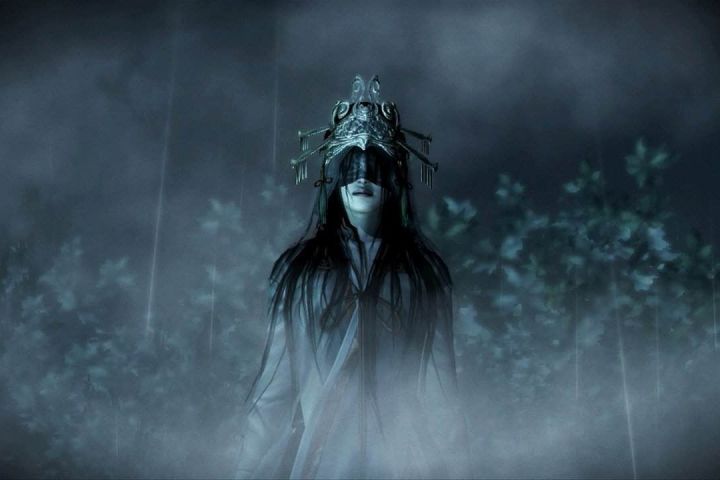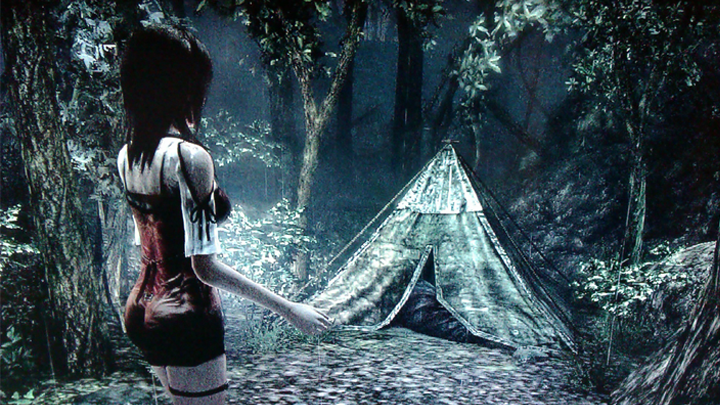05.17
From Playboy.com
 It was a cold, dark, stormy November night in the heart of the city, days after Halloween. My friend and I were taking shelter at my place, freezing rain beating down on the windowpanes and tree branches casting spidery shadows across the living room, the wind howling like a lone wolf. A late-night beer and Wii U session proved a reliable distraction from the weather, as did one of our chats about the gaming industry. Nothing heavy or particularly insightful – usually just discussing how the last boss in EarthBound is actually a foetus or seeing who can do the best impression of the ubiquitous merchant from Resident Evil 4. That’s about as cultured as we get.
It was a cold, dark, stormy November night in the heart of the city, days after Halloween. My friend and I were taking shelter at my place, freezing rain beating down on the windowpanes and tree branches casting spidery shadows across the living room, the wind howling like a lone wolf. A late-night beer and Wii U session proved a reliable distraction from the weather, as did one of our chats about the gaming industry. Nothing heavy or particularly insightful – usually just discussing how the last boss in EarthBound is actually a foetus or seeing who can do the best impression of the ubiquitous merchant from Resident Evil 4. That’s about as cultured as we get.
My most recent acquisition had been the latest in the Project Zero (Fatal Frame) series, Maiden Of Black Water. I was only a couple of chapters in, but already knew my friend would love it – we had, after all, shared an odd fascination with the game’s real-life inspiration, Aokigahara, for a few years.
This Japanese forest at the base of Mt Fuji is an infamous suicide spot for lonely souls and there’s thought to be a number of bodies within its dense, inescapable foliage at any given time. The game’s fictionalised counterpart, Mt Hikami, is much the same, and we gasped, jumped and laughed our way through it. Within a maze of trees, we were suddenly surrounded by persistent, shrieking spirits. A few flashes of the Camera Obscura fended them off momentarily, but as we made our escape, what we’d unwittingly find around one corner would freak us out more than any spiteful spectre.
It was a tent. Abandoned and decaying, it sat inconspicuously between the trees, an indecisive note lying in its awning.
We slowly turned to look at each other, wide-eyed and open-mouthed, before our synchronised “FUUUUCK!” filled the room. In a short Vice documentary we had watched years before, the exact same scene had been discovered in Aokigahara by geologist Azusa Hayano. That’s when the true realism of Maiden Of Black Water hit – just how much inspiration had been drawn from the suicide forest, an infamous part of Japan’s bloody past?

Of course, it’s not that such a striking place in the world has gone unnoticed by creatives until now, with myriad pieces of culture taking lead from it. The past year has seen the release of two movies set in Aokigahara including The Sea Of Trees, a sombre affair starring Matthew McConaughey, and more recently The Forest, which betrays the ethereality of the real area with over-the-top jump-scares and unintentional comedy. The forest appears to have also taken root in other games – Call Of Duty: World Of War‘s zombie-infested Shi No Numa map is set amidst misty, claustrophobic greenery, while the Pokémon series’ ghost-type Trevenant controls trees to trap people in its lair.
However, despite influencing various media itself, it’s widely believed that it was, in fact, modern works of fiction that helped to establish Aokigahara’s reputation as a place to end one’s life – the most popular one in Japan at that. Seichō Matsumoto’s 1960 novel Kuroi Jukai (Black Sea of Trees) tells the story of a couple’s suicide pact within the forest, but more significant is Wataru Tsurumi’s controversial 1993 Complete Manual of Suicide, which reportedly lists it as a “perfect place to die.” This dark advice has caught on – while statistics are nebulous, thanks in part to the government’s efforts to conceal the information, the number of discovered victims is reportedly in the hundreds. Given Japan’s rich mythology and superstitions, it’s unsurprising that the corpse-strewn forest has come to be seen as something of a gateway between the worlds of the living and the dead.
The story of Maiden Of Black Water sees an interconnected group of people – mainly young women laughably underdressed for a midnight stroll in the fog – take it in turns to follow their entranced loved ones onto Mt Hikami and rescue them from the malevolent spirits. That’s where personal effects often found in Aokigahara – including those featured in the Vice video – come into play as key items in the game. The bewitched people calmly follow the labyrinthe forest trails – paralleling Aokigahara’s forbidden, most dangerous paths – past abandoned cars, dolls pinned to trees and discarded maps, all of which are the leftover belongings of the suicidal, each one drawn to our attention in Hayano’s real-world patrol. These mementos serve as subtle, horrific backdrops to the game and add to the foreboding realism when you develop an appreciation of Japan’s most notorious woodland.
The game bears more significance to Japan’s folkloric idea of death than just suicide. The compassionate Hayano concludes the aforementioned documentary by stating he is unsure why people kill themselves in such a beautiful forest. An answer to his question can be found in Tsurumi’s recommendation that the evergreen stillness of Aokigahara actually brings peace at the final hour, a motif that also streams through several of Maiden Of Black Water‘s collectable suicide notes – the one outside the aforementioned tent reads “this place feels right.” The game could be seen as a morbid subversion of Japanese spirituality’s intrinsic connection with nature. Hikaru Suzuki’s book Death and Dying in Contemporary Japan highlights the Shinto religion’s concept of a deceased person “returning to nature” to become one with the surrounding elements. The game’s ethereal Shrine Maidens carry out this role – as well as lunging at you for a soul-sucking cuddle – having sacrificed themselves to allow water to flow through Mt Hikami, an idea of renewal continually highlighted through the paranormal adventure. These wet witches, however, share more in common with other barbaric practices from Japan’s darker eras: ubasute, the act of abandoning an elderly or infirm relative in the wilderness to die, which is said to have taken place in Aokigahara, and, more significantly, hitobashira or Sokushinbutsu, in which living people were buried alive in order to sustain the surrounding area. Centuries-old castles and constructions in modern-day Japan are said to have human remains in their foundations. The unfortunate women who become the game’s eponymous maidens appear to be directly inspired by these sacrificial “pillars.”
While it draws lifeblood from Aokigahara, other locations also lend their ghostly goings-on to Maiden Of Black Water. Director Makoto Shibata utilised his own disturbing experiences, as revealed in an interview with Siliconera; in Mount Osore (considered the entrance to the afterlife in Japanese mythology), he was left paralysed with fear after hearing the disembodied voices of playing children – much like the giggling abominations that try to “play” with the protagonist – while at the cliffs of Tojinbo, he saw a misanthropic message inscribed on a rock face – the kind you’ll find in several of the in-game suicide notes – before feeling an invisible presence trying to lift him off his feet.
The game’s Shrine of Dolls, with its countless effigies hanging from the trees, possibly borrows from one continent over – Mexico’s nightmarish Island de las Muñecas (Island of the Dolls). It shares a striking, unsettling similarity, at least. On this little island south of Mexico City, hundreds of ragged baby dolls are suspended around the scenery. The story goes that it started when caretaker Julián Santana Barrera was unable to save a little girl from drowning, then later found a child’s doll washed up on the shore. Believing it to be a representation of the girl, he hung it up in an attempt to ease her wayward spirit when she began to haunt him. He continued this grim decorating for 50 years before being found drowned in the same location. The plastic patrons still watch over the haunted islet to this day.
Although the game feels shaky and unfinished in places, it takes on a whole new light – or darkness – when you play through it with Aokigahara in mind. The real forest bolsters the scares and atmospherics you’ll experience in the virtual one, even if such interaction is built around lacklustre, counterintuitive handling – the dodge mechanic looks like Yuri has been startled by a bee and combat with incorporeal enemies in small rooms can quickly become an exercise in running headfirst into corners. Allegorical games and their Earthly inspirations are a captivating subject today, particularly when the technology-versus-art debate still goes on, and Maiden Of Black Water stands as a cultural insight into Japan’s mysterious, morbid, but ultimately fascinating history.


